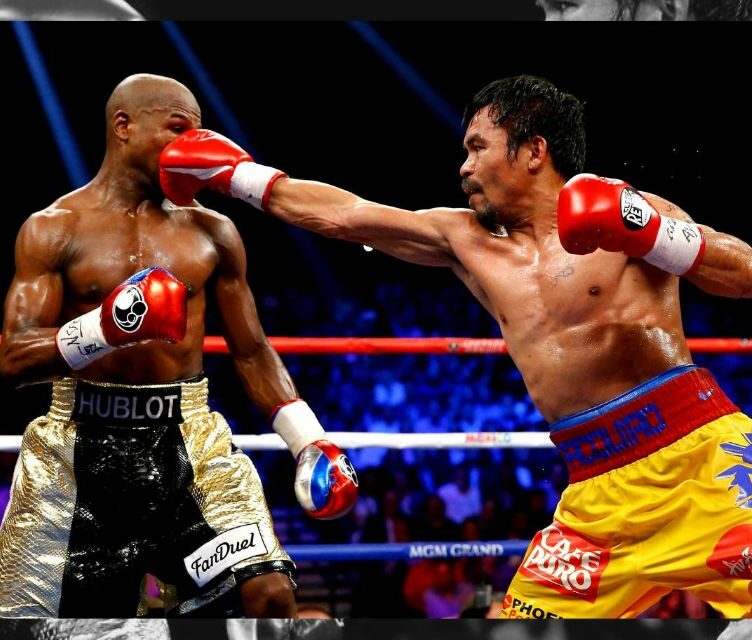ONCE upon a time, there was a very beautiful girl. But then, her mother died and her father remarried. With his new wife came two daughters—ugly, awkward, and deserving of punishment.
When the father passed, the stepmother showed her true colors. She made the beautiful girl clean the hearth, sleep in ashes, and suffer in silence.
Until the ball. Until the prince. And because she was the prettiest of them all, he chose her, married her, and they lived happily ever after.
Or so the story goes.
We heard variations of stories like this when we were kids. Stories that taught us that beauty automatically means kindness, and that ugliness is reserved for failure. That to be chosen, you have to be soft, pretty, and small. That to be loved, you have to be the most beautiful, most graceful, and most pleasing girl in the room.
And if you weren’t? Well, then you’re the problem. You’re the villain.
But what if that wasn’t the case at all? What if being “ugly” doesn’t mean you’re automatically the bad guy?
Emilie Blichfeldt’s horror feature “The Ugly Stepsister (2025)” asks this very question. It is a deconstruction of the beloved fairytale ‘Cinderella’.
But unlike Disney’s version, Blichfeldt’s story is told not through the rose-colored tint of the pretty girl who ended up with the prince. No. It was told through a narrative of body horror. The protagonist of this story is not Cinderella, but her Ugly Stepsister.
And the film’s color is not of rose, but of blood.
The Ugly Stepsister
The film follows Elvira, who dreams of nothing else but to marry the handsome Prince Julian. She is willing to go through great lengths, changing herself and body, just to achieve this dream.
However, her beautiful and aristocratic stepsister, Agnes—our Cinderella—is a threat to everything Elvira has been working toward.
As the royal ball draws near, the night the Prince will choose his bride, Elvira finds herself cornered. And desperation, as always, calls for desperate measures.
Elvira subjects herself to a series of medieval medical surgeries, enduring pain in the name of love and beauty.
Lesson 1: How to be a girl
When you’re born as a girl in a patriarchal society, that means that you’re born as a spectacle first, human second.
You are told that your value is dependent on how you look and how you embody the feminine traits assigned to you even when you haven’t gotten out of the womb yet.
Just observe. Remember the stories told to you as a kid. The fairytales where the beautiful women always succeed. Where success means marrying the prince or the king.
And then when you grow up, you see the movies on screen. You soon learn that it’s not enough to just be beautiful. That beauty contains a hierarchy within itself. Blondes are prettier than brunettes. Blue eyes are much more attractive than brown ones. The thinner the better. The paler— the more sickly and fragile you look— the more pleasing to the eyes you become.
The moments that come after you were born were all dedicated to make you look appealing to the Male Gaze.
First coined by Laura Mulvey in her essay, “Visual Pleasure and the Narrative Cinema,” the Male Gaze describes how the media and the society are structured around the male viewer and what they find appealing. It posits that women are positioned not as human beings but as objects to be looked at, to be consumed, to be seen, not to see.
This is the world Elvira is born into. The film hints at it from the very beginning, as Elvira dreams of Prince Julian. Her feelings for him go beyond mere admiration—her gaze is reverent, her devotion unsettling. It goes beyond love. It looks like worship.
It is an indication of how Elvira internalized Male Gaze.
Throughout the film, we constantly witness Elvira measuring herself against the ideal femininity prescribed by the male gaze. Unlike Agnes, who effortlessly fits the era’s beauty standards, Elvira’s features do not. She complies—willingly, even eagerly—with the culture and its expectations. But her natural body refuses to align with the artificial fantasy.
Her body is too wide, her nose too large, her movements never quite graceful enough. And so, while Agnes simply is, Elvira must become.
Internalizing male gaze also took its toll on Elvira. There was a scene where Elvira stared at her naked body in front of the mirror. She pinches a roll of fat from her stomach before opening a drawer to reveal a pastry she hid from her mother who put her on a restrictive diet.
It was clear that Elvira’s self worth depended on how the world perceives her. That she was willing to sacrifice what is natural for her body just so she could fit in the ideals.
This echoed the concept of Disciplinary Femininity. Because Elvira deeply internalized the patriarchal values since she was a child, she began policing her own body. The femininity she tries to exhibit isn’t natural or passive but produced through constant self-regulation.
Disciplinary Femininity was a concept developed by Sandra Bartky in her essay, “Foucault, Femininity, and the Modernization of Patriarchal Power.” It describes how women are trained to constantly monitor, control, and “correct” their bodies according to the Male Gaze.
Elvira begins to see her body not as a natural part of herself but as a project. She was taught that it was something to fix, manage, and perfect. She looks at herself critically through the narrow male-informed expectations, and craves the validation that comes from meeting them.
She treats her femininity not as something natural but as something that requires effort. She begins to subject herself to violent primeval plastic surgeries, just to embody this femininity. She undergoes rhinoplasty and eyelash extension without anesthesia despite the pain and the risk that comes with them.
She viewed her body not as her own, but as a site of cultural inscription. Society carved their expectations on her body, and she labors to embody those expectations.
Near the end of the movie, Elvira’s submission to the patriarchy led to her ultimate violence against herself— she cut off her toes to fit Agnes’ small shoes. She cut off her toes to be chosen.
Many critics call it out for its violence. But I don’t think it’s there simply for the shock value. Elvira’s violence against herself is representative of how women who internalized patriarchal expectations are ready to subject themselves to such horror just to feel worthy.
Lesson 2: Cinderella doesn’t get a happy ending. Not really.
It’s easier to position Agnes— the beautiful stepsister— as the villain of the story. After all, had she not gone to the ball, Elvira had a great chance of being chosen by the prince.
However, we must not look at it this way.
There were many instances in the film that showed how Agnes really sees the Prince. Unlike Elvira who views the prince through rose-tinted glasses, Agnes knew him for who he really is.
There was a scene when Agnes was helping Elvira bathe herself. Elvira read Prince’s Julian poem about the serpent and paradise. She was captivated by the Prince’s words, thinking of the deeper hidden meaning in them.
But when she asked Agnes what she thought the prince meant about the “serpent”, Agnes answered her frankly: “His penis.”
This showed how Agnes was aware of the game played by patriarchy. She wasn’t in love with the prince— she knew what kind of person he was.
But she also knew that the game was rigged to favor the prince. And her beauty is a weapon she could use to get it.
Unlike Elvira who internalized misogyny, Agnes was her own person. She was aware of her sexuality and practiced it with liberty. She had an affair with the stable boy, whom she loved dearly, but was ready to sacrifice for her survival.
Because even though Agnes was smart and beautiful, she was still at the mercy of the system.
Without her father, without any inheritance, Agnes’ place is threatened. She was abused by Rebekka, and treated as competition by Elvira. She had no one else to turn to but herself.
Agnes’s marriage to the prince isn’t romantic. It’s transactional. It’s survival.
Her character is representative of what Deniz Kandiyoti calls “Patriarchal Bargain.” It refers to the strategic decisions women make to gain some measure of security, approval, or power within male-dominated structures— even if those choices reinforce the very system that oppresses them.
And it is not only Agnes that practiced it— every woman in the film, except for Alma (Elvira’s biological sister)— became a sub-oppressor themselves because of their desire for power.
Rebekka, perhaps, is the cruelest among them. She parades Elvira around the ball like a show dog, driven by her own hunger for wealth and status. But the most brutal part isn’t the blood-soaked surgeries or the grotesque visuals scattered throughout the film—it’s Rebekka’s calm compliance. Her quiet encouragement. The way she watches her daughter suffer and calls it love.
The most chilling scene in the film doesn’t come from a scalpel—it comes from Rebekka. When Elvira collapses after cutting off her toes in one foot, it’s Rebekka who rushes to her side. Not to console her, like Alma did, but to finish the job.
She takes the knife in her own hands and says, almost tenderly, “Oh, Elvira, you cut off the wrong toes.”
There is no true happy ending in this film.
Only women trapped in stories that were never written for them to survive.
Lesson 3: Of phalluses, worms, and princes
If Elvira and Agnes aren’t the real villains, then who is?
The film answered through an infestation of images: worms, maggots, tapeworms, silkworms, a serpent, and a phallus.
The phallus— is often representative of the male power or patriarchy. It is the most common and concrete observable difference of the male body from the woman body. Throughout history, it is associated with dominance and control— things that are denied to women.
In Ancient Greece and Rome, the phallus is not only a symbol of fertility but of power, aggression, and divine right. Gods like Priapus and Dionysus were often depicted with exaggerated genitals, embodying masculine abundance and dominance.
In the 20th century, Freud developed the idea of phallic symbolism. Psychoanalyst Sigmund Freud claimed that it was central to identity and power dynamics. That to possess a phallus is to possess power and social privilege.
But in the film, the phallus— though associated with power— was also linked to decay. To corruption.
Elvira’s sacrifice involved taking in a tapeworm in her body, which made her lose weight and conform to the ideal femininity. But it also ate up her body’s nutrition and caused her to lose hair.
As a symbol of Elvira’s freedom from the leash of patriarchy in the end, Alma made her take the antidote for tapeworm. The parasitic entity in Elvira’s body was so long that it was hard to watch them get it out of her.
The scene is nauseating. The worm writhes as it’s pulled from Elvira’s body, foot by foot, like a second spine she never asked for. It’s a brutal, physical metaphor for what the film has been saying all along: the very thing she thought would make her beautiful, worthy, lovable—was killing her from the inside.
The tapeworm is not just a parasite. It is the patriarchy made flesh. It feeds on the body of the woman, promising transformation while silently consuming her life. It’s a fitting stand-in for the demands placed on femininity: be smaller, be prettier, be wanted—but not too much. The longer the worm stays inside, the more Elvira disappears.
It represents a corrupt and decadent dream by patriarchy.
A summary of the glass slipper
The glass slipper was never a perfect fit—it was a test. A cruel one. One that demanded pain, sacrifice, and silence. It stands as a metaphor for the narrow ideals women are forced to fit—standards crafted by a gender that knows nothing about women’s bodies.
In “The Ugly Stepsister”, it becomes the ultimate symbol of compliance: if your body doesn’t fit the fantasy, then you must mutilate it until it does.
This is how patriarchy works—not just by controlling women, but by making them believe they must control themselves. It poisons not only how a woman sees her own body, but how society sees her worth. It teaches us that beauty is a prerequisite for love, that pain is part of the bargain, and that those who refuse to suffer are simply not trying hard enough.
And perhaps most insidiously, it pits women against each other. It tells us there can only be one: one who is chosen, one who is loved, one who wins. So we get the fairy tale of the “beautiful stepsister” and the “ugly one”—a binary designed to distract us from the real villain.
But in reality, there are no beautiful stepsisters or ugly ones. Only women, caught in a story that demands they hurt each other to survive.
We must realize that we shouldn’t cut off our toes to fit the slipper. Instead, the slipper should be made to fit us.
How useful was this post?
Click on a star to rate it!
Average rating 0 / 5. Vote count: 0
No votes so far! Be the first to rate this post.
We are sorry that this post was not useful for you!
Let us improve this post!
Tell us how we can improve this post?







